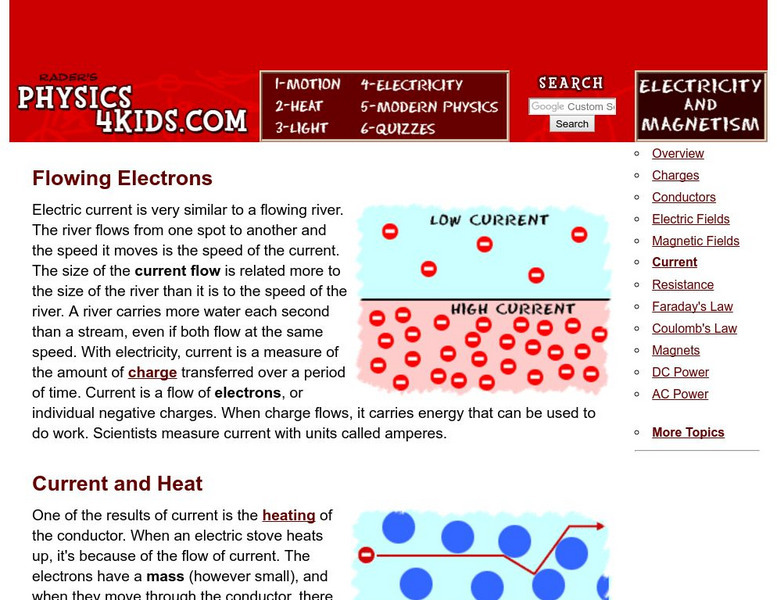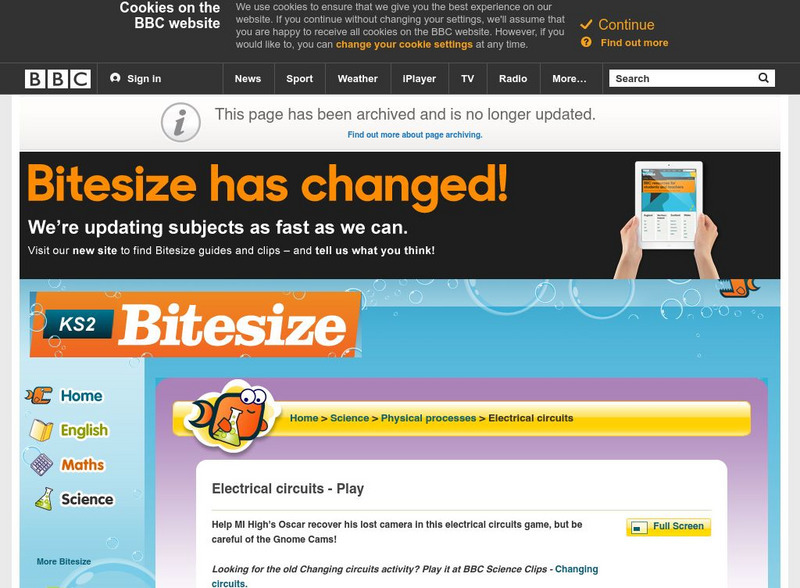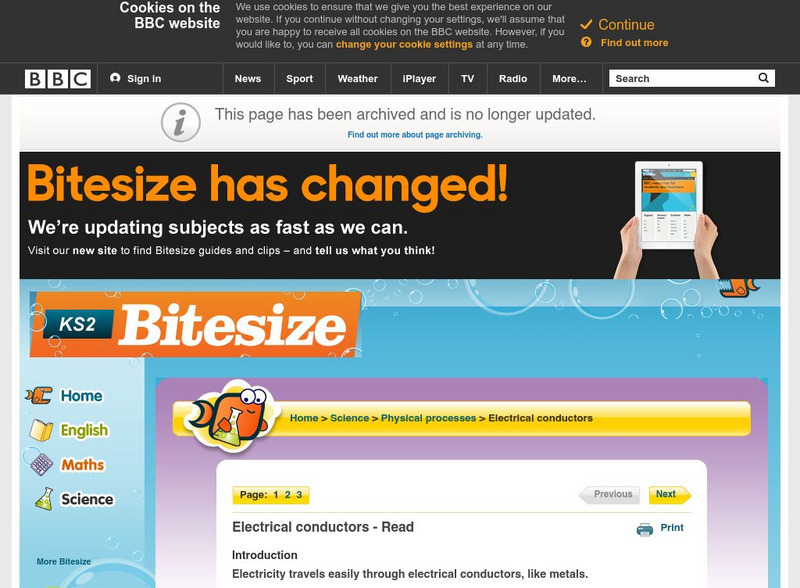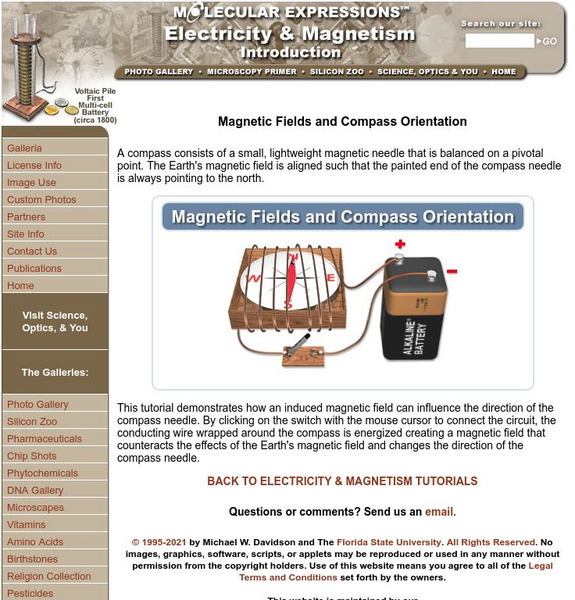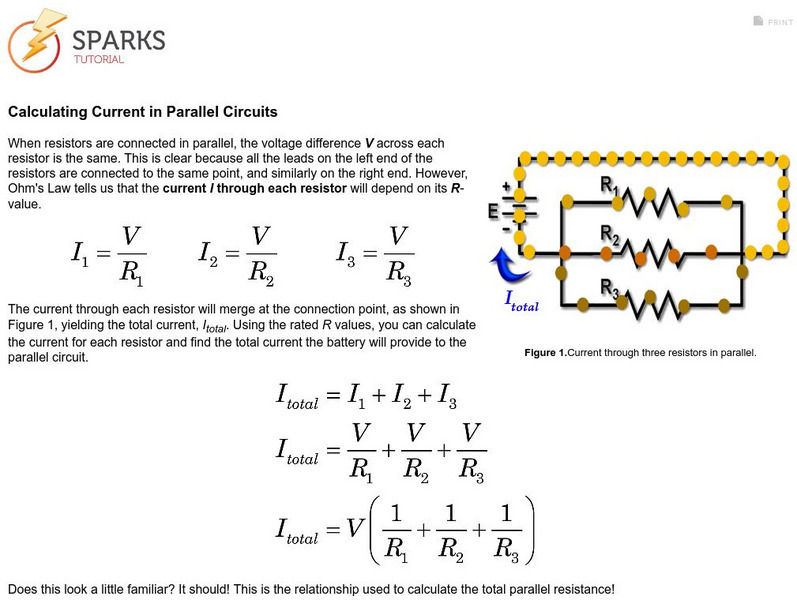Physics4kids
Physics4 Kids: Electricity and Magnetism: Current
Explains electric current, how it produces heat, and the difference between a direct current and an alternating current.
Ducksters
Ducksters: Physics for Kids: Electric Current
Kids learn about electric current in the science of physics including the flow of electrons, measurement, alternating, and direct current.
BBC
Bb Ci Schools: Revisewise Science Electricity
This lesson provides an interactive activity on electrical circuits along with a information sheet and a practice test.
BBC
Bbc Schools: Ks2 Bitesize: Science: Physical Processes: Electrical Conductors
A review of electrical conductors and insulators, with diagrams, activities, and quiz questions.
CK-12 Foundation
Ck 12: Measuring Current and Voltage
[Free Registration/Login may be required to access all resource tools.] Students are introduced to the ammeter, which measures electrical current, and to the voltmeter, which measures voltage.
Science and Mathematics Initiative for Learning Enhancement (SMILE)
Smile: Electromagnets
This lesson plan contains several activities designed to help the student understand the magnetic effects of an electrical current.
Physics Aviary
Physics Aviary: Induced Current Lab
This lab was designed to have students test the factors that determine how much current is induced in a circuit when area of the circuit is changed. This lab is a quantitive lab that supplements the lab on magnetic flux.
CK-12 Foundation
Ck 12: Force on an Electric Current in a Magnetic Field
[Free Registration/Login may be required to access all resource tools.] Students learn how a magnetic field affects moving charged particles or an electric current carried by a wire.
CK-12 Foundation
Ck 12: The Electric Generator
[Free Registration/Login may be required to access all resource tools.] This lesson explains how an electric current is produced by a generator. Includes a simulation.
Concord Consortium
Concord Consortium: Finding Current With Ohm's Law
Learn how to measure the electrical current using Ohm's Law.
Florida State University
Florida State University: Molecular Expressions: Magnetic Fields and Compass Orientation
Simulate the creation of an induced magnetic field through the use of a simple electric circuit. An interactive demonstration is included.
Khan Academy
Khan Academy: Dc Circuit and Electrical Power Review
Review the components of a circuit and their symbols such as battery, resistor, and switch. Analyze how the power of a resistor is related to the current and electric potential difference across the resistor.
Science Education Resource Center at Carleton College
Serc: Magnetism and Sound: Creating Your Own Headphones
Middle schoolers will explore how magnets can create a current by making their own headphones and listening to music from their iPods.
Science Education Resource Center at Carleton College
Serc: Electric Circuits Guided Inquiry
An electrical circuit guided inquiry where students investigate what an electric circuit is, the main parts of a circuit and the difference between series and parallel circuits. Students groups create a circuit using materials provided...
E-learning for Kids
E Learning for Kids: Science: Greece: What Can Electricity Do?
Alex is an actor in a play. Help him figure out which items use electricity so he can make sure everything is ready for the play.
Science Education Resource Center at Carleton College
Serc: Investigating Testing for Electrical Conductivity Using Materials
In this activity, learners will understand that electricity moves through different circuits and discover what types of materials are conductors and insulators.
Physics4kids
Physics4 Kids: Electricity and Magnetism: Resistance
Explains electrical resistance and how it is measured using the formula for Ohm's Law.
American Association of Physics Teachers
Com Padre Digital Library: Open Source Physics: Electric Generator Model
An electromagnetic induction model that simulates an electric generator made from a conducting loop rotating in a uniform magnetic field and connected to an ammeter.
Khan Academy
Khan Academy: Using Voltmeters & Ammeters to Measure Potential Diff and Current
Practice identifying the correct placement of voltmeters and ammeters to measure an unknown circuit or electric potential difference for a circuit.
Concord Consortium
Concord Consortium: Measuring Current in Parallel Circuits
When measuring the current in parallel circuits, compare the circuit's total current with the current through just one resistor.
Concord Consortium
Concord Consortium: Measuring Current on a Breadboard
Find out how measuring current in a circuit is like measuring the flow rate of water in a sprinkler system.
Concord Consortium
Concord Consortium: Calculating Current in Series Parallel Circuits
Use resistance formulas to determine the total resistances of the series and parallel parts. Then, use Ohm's Law to calculate the voltage drops across and currents through each part.
Physics Aviary
Physics Aviary: Practice Problems: Current in a Wire Problem
Determine the resistance of a wire based on its composition and its physical dimensions. Find the current that would flow through the wire when the wire is connected to a certain voltage.
Concord Consortium
Concord Consortium: Calculating Current in Parallel Circuits
Use Ohm's Law to calculate the current in parallel circuits.
Other popular searches
- Static and Current Electricity
- Bill Nye Current Electricity
- Current Electricity Test
- Current Electricity Power
- Electricity Circuits Current
- Current Electricity Review
- Static or Current Electricity
- Statc or Current Electricity
- Static Electricity Current
- Electricity Current
